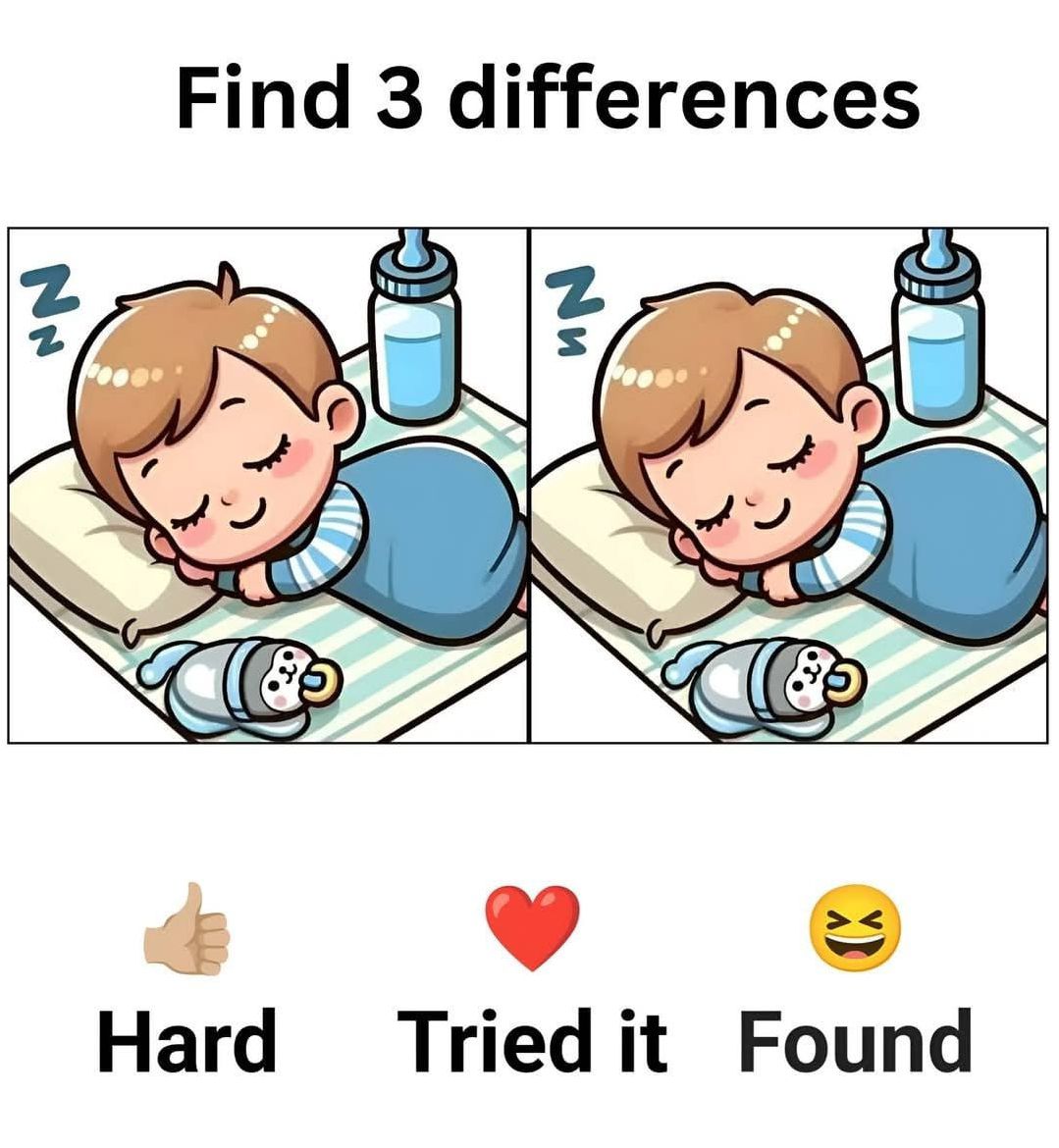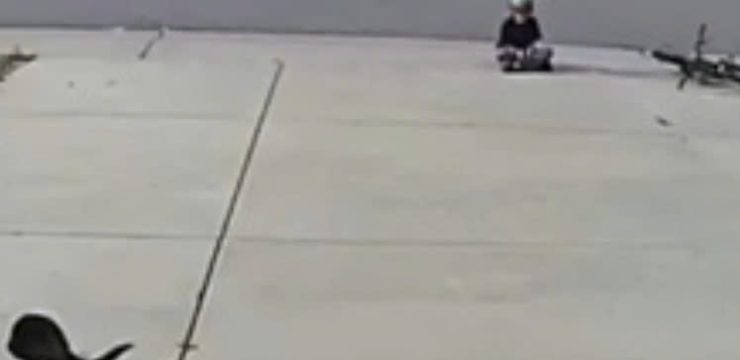Are you ready to put your observation skills to the test? At first glance, this adorable image of a sleeping baby looks exactly the same in both pictures, but don’t be fooled. There are three subtle differences between the two panels that are easy to overlook unless you’re really paying attention. The challenge is simple: can you spot all three differences without any hints or help? It might sound easy, but this kind of puzzle is designed to trick your eyes and your brain.

That’s what makes spot-the-difference challenges so much fun—and surprisingly frustrating. They play on the assumption that your brain fills in the blanks when looking at familiar images, causing you to miss tiny changes. Most people glance quickly and assume everything is identical. Others focus only on the most obvious features, like the baby’s face or bottle, without scanning the background or clothing. And some don’t think to compare elements side by side as closely as they should. If you’ve been staring at the image for a while and can’t find all three changes, don’t worry. You’re not alone. This one’s tricky.
Let’s walk through each part of the image together and identify the differences step-by-step. These subtle changes have been highlighted in red in the answer image, but here’s a more detailed explanation of where to look. The first difference is in the top-left corner of the picture, where the traditional “Z” symbols float above the baby’s head, signaling sleep. In the first image, all the “Z” shapes are correctly oriented. But in the second image, one of the Zs is flipped—it’s mirrored and facing the opposite direction. This little change is incredibly easy to miss because your brain doesn’t usually scrutinize cartoon letters floating in the background. The second difference involves the baby’s hair. In the first image, there’s a small curl of hair sticking out from the top of the baby’s head. But if you look at the second image, that curl is missing entirely. The baby’s hair looks smooth, with no detail at the top.
It’s a subtle change, but once you spot it, you can’t unsee it. It’s a classic example of how puzzle designers remove small details to test your ability to notice what’s gone. The third and final difference lies in the baby’s striped shirt sleeve. In the first image, the sleeve has alternating blue and white stripes. But in the second image, one of the stripes is missing. This is perhaps the trickiest of all because your attention naturally focuses on the baby’s facial features, not the arm. Plus, the difference blends in with the rest of the sleeve, making it even harder to detect. To sum it up, here are the three hidden changes: one of the “Z” symbols above the baby’s head is reversed, the little curl of hair on top of the baby’s head is missing, and the pattern on the baby’s sleeve has one fewer stripe. Did you manage to find them all on your own? Or did one of them totally stump you? Spot-the-difference puzzles like this one aren’t just fun little distractions—they’re actually good for your brain. They help improve visual memory, focus, and attention to detail.
Whether you’re a kid developing your cognitive skills or an adult trying to stay mentally sharp, these puzzles provide an easy and entertaining way to give your brain a gentle workout. They’re also great for competitive challenges with friends or family. Try sharing the puzzle with someone else and see who finds the differences faster. It’s a fun way to pass the time during a coffee break or while waiting in line. And even if you don’t find all three right away, the satisfaction of finally spotting them makes it all worth it. So the next time you see a spot-the-difference challenge, take a moment to really examine each detail.

These simple visual games train your eyes to notice what others might miss—and that skill can come in handy in everyday life, whether you’re proofreading a document, searching for your keys, or spotting inconsistencies in a plan. The more you practice, the better you’ll get. So keep looking, stay curious, and challenge yourself often. You never know when that sharpened sense of observation will come in handy. Keep spotting, keep solving, and most of all—keep having fun. Your brain will thank you for it.





